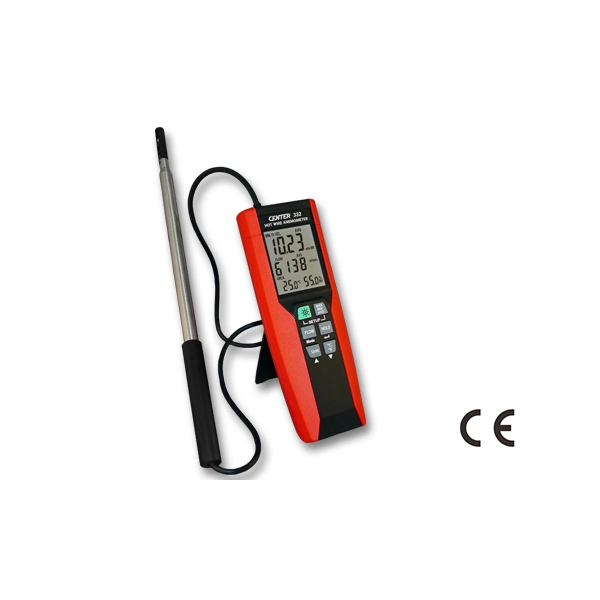Why an Anemometer is Vital for Your Environmental Data Collection
Why an Anemometer is Vital for Your Environmental Data Collection
Blog Article
Anemometers Introduced: Understanding Their Significance in Environmental Surveillance and Security Actions
The duty of anemometers in ecological tracking and safety measures is frequently undervalued, yet their value is obvious. These tools have a long history rooted in scientific questions and technological improvements, progressing to come to be necessary tools in numerous fields. From weather forecasting to aeronautics security, anemometers play an essential role in providing exact data that informs decision-making procedures and boosts general safety. Understanding the ins and outs of anemometers introduces a globe of essential insights that are essential to our understanding of the environment and the steps we take to make certain safety.
Background of Anemometers
The advancement of anemometers can be mapped back to the ancient human beings where simple wind measuring tools were very first made use of. These early wind dimension tools laid the foundation for the advancement of extra sophisticated anemometers in time. One of the earliest known anemometers was the hemispherical cup anemometer developed by Leon Battista Alberti in the 15th century. This design included four hemispherical mugs that accumulated wind energy, providing a measurement of its strength based on the speed of rotation.
Over the years, developments in modern technology led to the growth of even more modern anemometers, including ultrasonic anemometers and laser Doppler anemometers, using enhanced precision and effectiveness in determining wind speed and instructions. The background of anemometers showcases an impressive trip of development and progression in the field of weather forecasting.
Sorts Of Anemometers
Throughout the area of weather forecasting, different kinds of anemometers have actually been created to accurately measure wind rate and direction. The most typical type is the mug anemometer, which consists of three or 4 mugs mounted on horizontal arms that rotate with the wind. As the cups rotate, the speed at which they rotate is directly proportional to the wind rate. One more extensively utilized kind is the vane anemometer, which features a tail or fin that straightens itself with the wind instructions. This placement permits the device to determine the wind instructions. Sonic anemometers use ultrasonic signals to gauge wind speed and instructions accurately. They are frequently made use of in study applications as a result of their high precision. Hot-wire anemometers run based on the principle that the cooling effect of wind on a warmed cable is symmetrical to the wind speed. These anemometers appropriate for gauging low wind rates with high precision. Each kind of anemometer has its toughness and is selected based on the details demands of the surveillance job available.
Applications in Weather Forecasting
Having gone over the different kinds of anemometers utilized in meteorology for determining wind rate and instructions, it is important to explore their functional applications in the area. Anemometers play a vital function in weather forecasting by providing real-time and exact data on wind conditions (anemometer). Meteorologists make use of anemometers to monitor wind speed and try this instructions to anticipate weather patterns, problem cautions for serious climate events like tornados, tornadoes, and cyclones, and assess atmospheric problems for aviation safety and security
In meteorology, anemometers assist in understanding regional and local wind patterns, which are essential for forecasting weather condition adjustments and figuring out weather trends. These devices are additionally made use of in research to study microclimates, city warmth islands, and air pollution diffusion. In addition, anemometers are employed in farming to optimize crop management techniques, such as irrigation and chemical application, based on wind problems.
Importance in Air Travel Safety And Security
An integral aspect of making certain aeronautics security exists in the thorough tracking of wind problems making use of anemometers. Anemometers play a crucial duty in aviation by offering real-time information on wind speed and instructions, helping pilots in making informed choices during flight, read more landing, and take-off. Unforeseeable and strong winds can substantially affect airplane operations, making it important for aviation authorities to rely upon exact wind measurements to make sure the security of travelers and team.

In the dynamic setting of air travel, where also minor modifications in wind speed and direction can have extensive effects, anemometers stand as important tools for advertising secure and secure air traveling.
Function in Environmental Study
Anemometers play a vital duty in ecological study by supplying vital data on wind speed and direction. By properly determining wind characteristics, anemometers assist scientists evaluate the motion of pollutants in the air, analyze the effect of industrial exhausts, and forecast the spread of impurities in the atmosphere.


Verdict
In final thought, anemometers have played a vital function in ecological monitoring and security measures. Recognizing the significance of anemometers is necessary for precisely determining wind speed and instructions, which is crucial for predicting climate patterns, ensuring risk-free air travel procedures, and conducting ecological researches.
One of the earliest known anemometers was the hemispherical mug anemometer designed by Leon Battista Alberti in the 15th century. Over the years, improvements in modern technology led to the growth of more modern-day anemometers, including ultrasonic anemometers and laser Doppler anemometers, providing increased accuracy and efficiency in measuring wind speed and instructions. Hot-wire anemometers run based on the concept that the cooling impact of wind on a heated cord is symmetrical to the wind speed. Meteorologists use anemometers to check wind rate and direction to anticipate climate patterns, concern cautions for extreme weather events like hurricanes, cyclones, and tornados, and assess atmospheric problems for air travel safety.
Recognizing the value of anemometers is important for anonymous accurately gauging wind rate and instructions, which is essential for forecasting climate patterns, ensuring secure aeronautics procedures, and conducting ecological studies. (anemometer)
Report this page